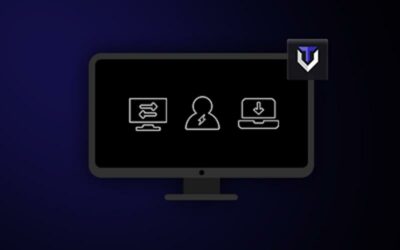The digital age offers incredible opportunities for businesses of all sizes. However, this interconnectedness also creates vulnerabilities that cybercriminals are constantly seeking to exploit. The nature of cyber threats is constantly evolving, demanding a proactive approach to cybersecurity. This blog post will equip you with the knowledge to navigate the top 5 cybersecurity threats businesses are likely to face in 2024.
The Evolving Threat Landscape: Why Proactive Defense Matters
Cyberattacks are no longer a matter of “if” but “when.” The cost of cybercrime continues to rise, with global losses projected to reach a staggering $10.5 trillion by 2025 [1]. Cybercriminals are becoming increasingly sophisticated, employing advanced tools and techniques to bypass security measures. Relying solely on reactive solutions is no longer enough. Businesses in 2024 need to adopt a proactive defense strategy, anticipating potential threats and implementing robust security measures to mitigate risks.
Top 5 Cybersecurity Threats for Businesses in 2024
- Ransomware with a Twist: Exfiltration
Ransomware remains a top cybersecurity threat, but attackers are upping the ante. Beyond the traditional tactic of data encryption, criminals are now threatening to exfiltrate (steal and leak) sensitive company data if the ransom is not paid. This “double extortion” tactic puts immense pressure on businesses, as leaked data can lead to severe financial losses, reputational damage, and regulatory fines.
Recommendations: Implement a comprehensive data backup and recovery plan, ensure regular backups are stored securely offline, and prioritize employee security awareness training to identify and report suspicious emails.
- Payment Diversion Fraud: A Wolf in Sheep’s Clothing
Payment diversion fraud is a rapidly growing threat that targets businesses through fraudulent invoices and payment requests. Criminals employ various tactics like email spoofing, where they disguise their emails to appear legitimate, often mimicking trusted vendors or colleagues. These emails may contain seemingly innocuous requests to update payment information or redirect payments to a different account. The key here is vigilance.
Recommendations: Establish clear internal protocols for approving invoices and payments. Verify all payment information directly with vendors before processing any requests. Educate employees on payment diversion scams and emphasize the importance of verifying sender legitimacy before taking any action.
- Evolving Malware Techniques: Beyond Traditional Detection
Malware, malicious software designed to disrupt operations or steal data, remains a significant threat. However, cybercriminals are constantly developing new methods to evade traditional detection software. These techniques may involve fileless malware that doesn’t leave a traditional footprint on a system or polymorphic malware that constantly changes its code to avoid signature-based detection.
Recommendations: Move beyond a single layer of defense. Utilize a combination of security solutions, including antivirus, anti-malware, and endpoint detection and response (EDR) tools that provide real-time monitoring and threat analysis. Regularly update software and operating systems with the latest security patches to address vulnerabilities exploited by malware.
- Supply Chain Vulnerabilities: A Weak Link in the Chain
Today’s businesses rely heavily on third-party vendors and suppliers. Unfortunately, a security breach at a vendor can have a domino effect, impacting all the businesses within the supply chain. Attackers may target a less secure vendor to gain access to a larger target organization.
Recommendations: Conduct thorough security assessments of your vendors before establishing partnerships. Ensure vendors have robust security practices in place and clearly define data security obligations within your contracts. Monitor third-party security news and take steps to mitigate any potential risks identified.
- The Human Factor: Social Engineering on the Rise
Despite advancements in technology, the human element remains a critical vulnerability in cybersecurity. Social engineering tactics exploit human psychology to manipulate individuals into revealing sensitive information or taking actions that compromise security. These tactics can range from phishing emails that appear legitimate to phone calls posing as IT support personnel.
Recommendations: Invest in regular employee security awareness training to educate employees on social engineering tactics and best practices for identifying and avoiding them. Implement multi-factor authentication (MFA) for all logins, adding an extra layer of security beyond passwords.
Building a Robust Cybersecurity Defense
Understanding these top 5 cyber threats is the first step towards a more secure future for your business. However, cybersecurity is an ongoing process. Here are some additional recommendations to consider:
- Conduct regular security assessments to identify and address any vulnerabilities in your systems.
- Develop and implement a comprehensive incident response plan to manage a cyberattack effectively.
- Stay informed about evolving cyber threats and adapt your security strategy accordingly.



